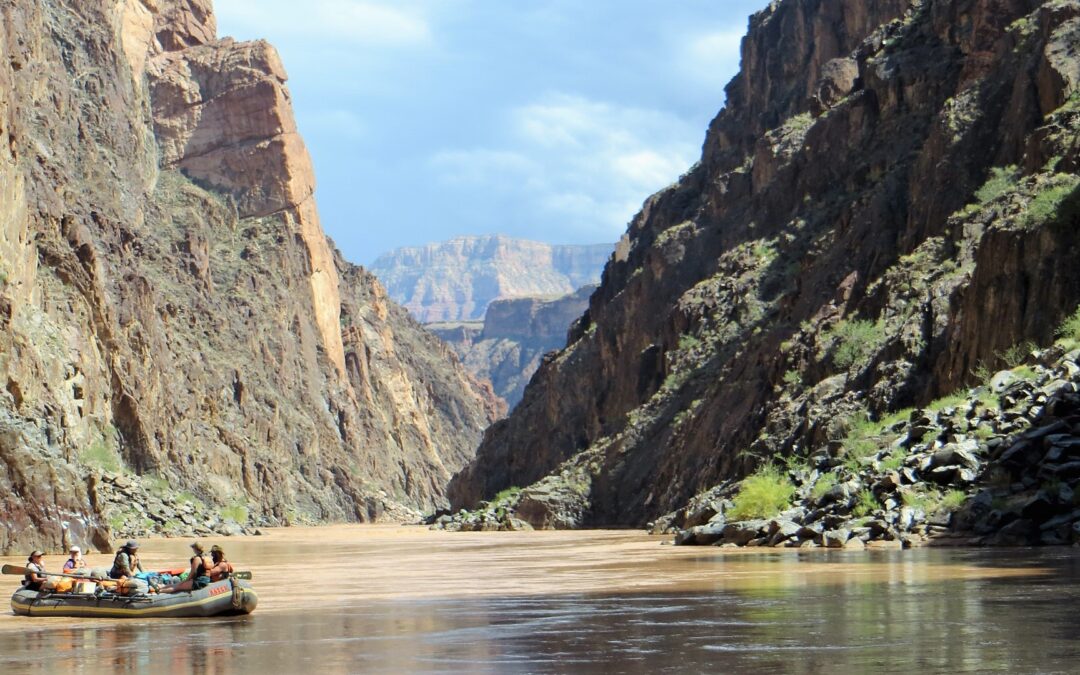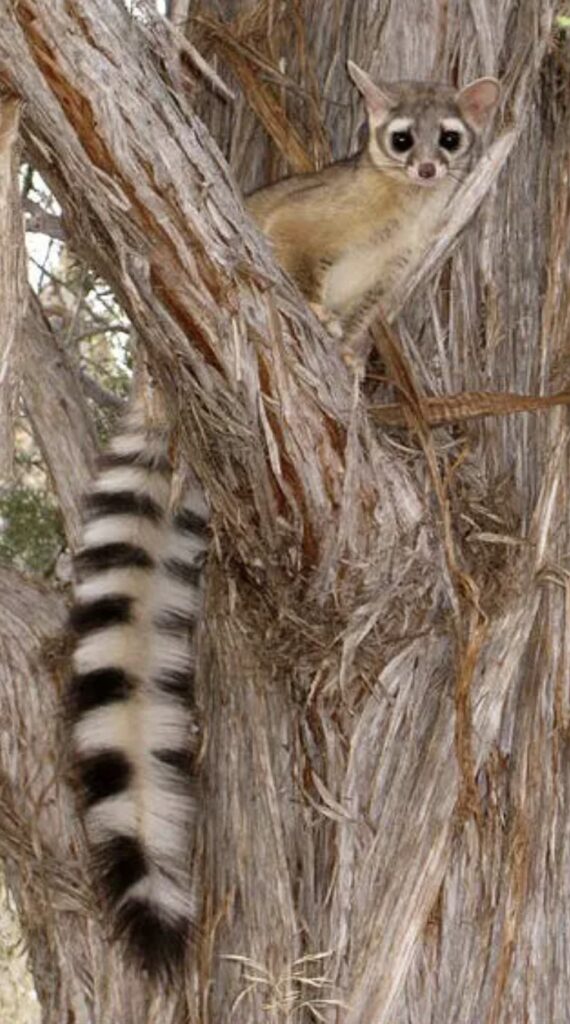Grand Canyon National Park recently announced that the park will be temporarily closing to overnight hotel stays starting on December...


When you think of wildlife in the Grand Canyon, your mind might jump to the majestic California condor soaring overhead or a herd of big horn sheep scaling the cliff walls. But the canyon holds a few nighttime secrets, too—like the elusive and absolutely adorable ringtail.
Most visitors never spot a ringtail, and that’s no surprise—they’re nocturnal and incredibly shy. But every now and then, one might make a surprise appearance in the evening hours, and it’s always a treat for those lucky enough to see it. And if you don’t see them you might hear them making chattering and clicking noises in the cliffs.
So what exactly is a ringtail?
Imagine a creature that looks like the perfect mash-up of a lemur, a fox, and a cat. About the size of a housecat (roughly 20 inches long), ringtails have slender bodies, expressive faces, and big eyes adapted for night vision. But the star of the show? Their long, bushy tails banded with striking black and white stripes—almost like a raccoon-meets-lemur hybrid.

You might be surprised to learn that the ringtail is Arizona’s official state mammal. And for good reason—they’re agile, resourceful, and deeply woven into the region’s natural history.
Though they look like they belong in a rainforest, ringtails are actually members of the raccoon family and thrive in the rocky cliffs, canyons, and crevices of the desert Southwest. They’re expert climbers, using their tails for balance and their sharp claws for gripping the steep walls of the Grand Canyon.
Don’t let their wide eyes and charming looks fool you—ringtails are notorious camp robbers. They’re opportunistic feeders, always on the lookout for unattended food. If you’re camping in the canyon, make sure to store your snacks properly, or you might wake up to find your snacks eaten.
In the wild, ringtails can live up to nine years. Each spring or early summer, female ringtails give birth to litters of three or four kits. Within just five weeks, the young are already beginning to learn how to hunt and fend for themselves—fast learners in a rugged landscape. They are omnivores and their diets are large and diverse. They are known to eat bugs, small rodents, carrion, berries, nuts, some plants, birds, cacti and even snakes!
Meet some of the other animals that live in the Grand Canyon:
If you’re rafting when there are monsoons in Grand Canyon, you might experience something incredible Imagine this: It’s your second day in the canyon and you are overwhelmed by how monumentally tall the walls around you seem to have gotten in such a short time. In the...
Bugs in Grand Canyon! With Halloween at the end of the week, it will be hard to go anywhere without being inundated by pumpkins, spider webs, costumes, and candy. In the spirit of the season, we thought you might like to know a bit about some of the more...
Grand Canyon Q&A: A Conversation with 7th Graders This past week, I got a call from our office asking if I’d be willing to talk to some seventh graders about the Grand Canyon. It was definitely an unusual request for me, but of course I said yes. When I...